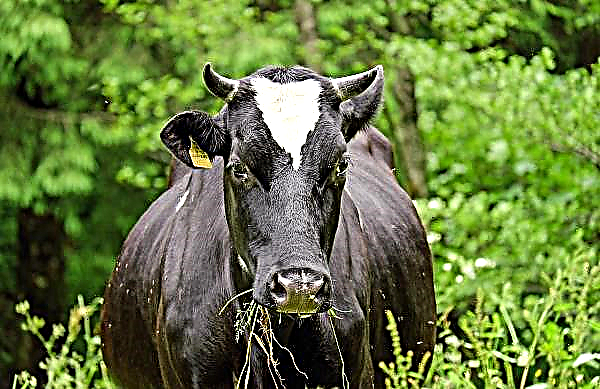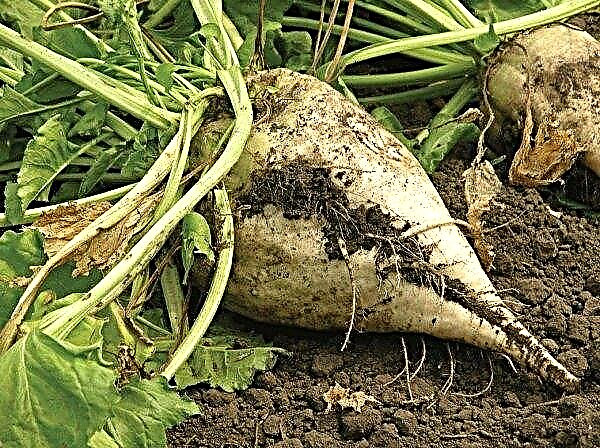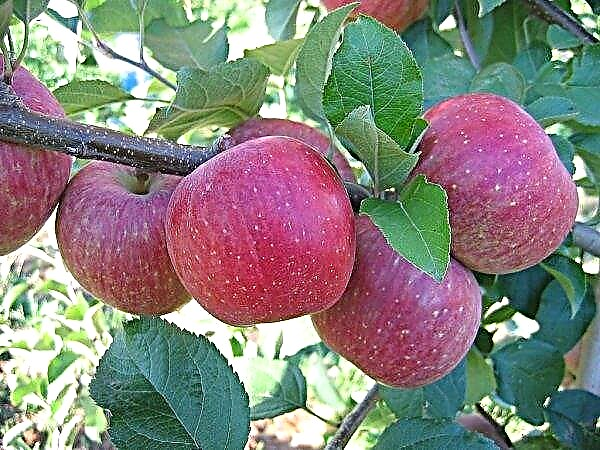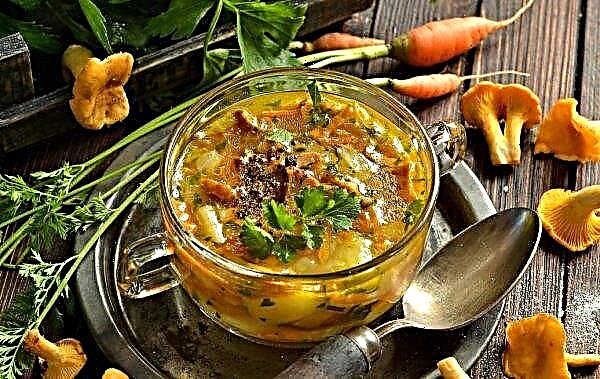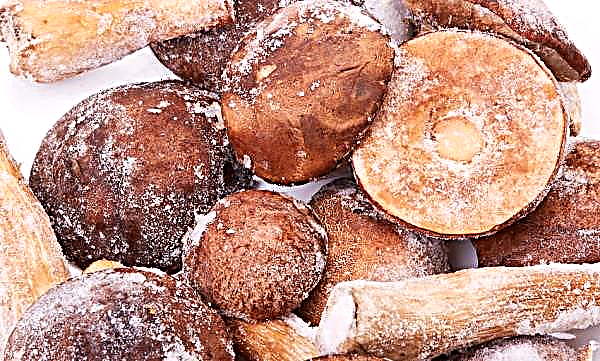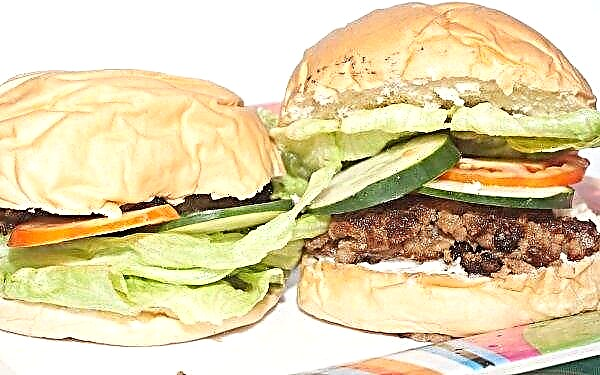Dutch cucumber varieties mean good seed quality and high yields. One of these varieties is a hybrid of the first generation Tchaikovsky F1. Read about the features of its cultivation in the review.
Characterization and description of the variety
Variety Tchaikovsky F1 is a greenhouse salad cucumber, with a smooth thin peel and fragrant flesh. They are distinguished by a gentle taste without bitterness and a small amount of seeds. The originator of the variety is the Dutch company Rijk Zwaan Zaadteelt En Zaadhandel B.V., which registered this variety in 2017.
The hybrid is designed for growing in greenhouses 2 and 3 light zones. The list of such areas includes not only the middle strip of Russia, but also all the northern regions.
Variety characteristic:
- basic: medium-early, lettuce, self-pollinating (parthenocarpic) cucumber hybrid of the first generation with good fruiting;
- ripening: on the fortieth day after emergence of seedlings;
- yield potential: standard, about 4.8 kg / m²;
- disease resistance: high to cladosporiosis.
Did you know? The wild ancestors of cucumbers still grow in the Himalayas. People began to eat them more than 6000 years ago.
External description of fruits and bush
Cucumbers are representatives of the pumpkin family. They form a stem that clings to a support and rises to the sun. In the internodes of the stem, flowers form, and then the ovaries. Leaves of medium size, five-lobed, light green in color. Variety Tchaikovsky is a dark green thin cucumbers that grow up to 10 cm in length. 
Plant characteristics:
- bush: medium-branched, with strong lashes, indeterminate;
- flowers: female type;
- leaves: dark green, medium size;
- fruit: cylindrical, elongated, small tuberous;
- fetal weight: 84–110 g;
- color: bright green;
- flesh: without bitterness, aromatic.
Fruitfulness
The originator indicates that the yield of the variety is at the standard level and is 4.8 kg of cucumbers from one plant. In terms of square meter - this is 21 kg. At the same time, on one square meter it is recommended to sow no more than 3 plants.
Did you know? Cylinder — not the only form of cucumbers. United Arab Emirates breeders bred a variety with square fruits.
Ripening and flowering periods
The maturity of a cucumber is determined by a number of factors, including how it looks and smells. If the cucumber has reached a size of 8-10 cm and has a pronounced cucumber smell, then it has matured. The declared ripening dates for the Tchaikovsky F1 variety are 40 days from the appearance of the seedlings. 
Pros and possible disadvantages of the variety
- The advantages of the variety are:
- simultaneous fruiting;
- high productivity;
- lack of need for pollinators;
- good transportability and durability;
- pleasant taste without bitterness;
- the possibility of long-term storage of the crop;
- disease resistance.
A feature of cucumbers is “friendly” ripening. The lashes on which greens hang are strong enough and can withstand a large crop. But farmers recommend tying them in order to ease the load on the vines. Plants can bear fruit until the colds, and the harvest is well stored, which is also the advantage of this hybrid.
- The disadvantages of the variety:
- recommended for growing in greenhouses, despite the early ripening;
- self-fertile, but when polluted by insects, deformation of the fruit is possible.
Hybrid seeds are not harvested - in order to plant the same variety for next year, you have to buy the seeds again.
Did you know? The first greenhouses were created by the gardeners of the emperor Tiberius (14–16 years BC) He wanted to see cucumbers in his menu all year round. For this, his gardeners invented special carts, covered with pieces of transparent mica, in which the emperor’s favorite vegetable was grown.
Sowing and growing technology
There are two main types of cucumbers: for growing outdoors and in a greenhouse. Those designed for open ground are rough, slightly ribbed. They are more tolerant to cool climates. Such fruits are always prickly to the touch. But greenhouse cucumbers form a smoother peel and need additional heat for ripening. Both of them need a lot of sun. Some, but not all, varieties can grow both in the greenhouse and in the ground. 
In the open ground
For open ground, seedlings are grown in small pots, with a universal soil mixture. For germination, the seeds need a temperature of about + 20 ° C. Therefore, the containers are placed in the propagator for faster germination, or illuminated with special lamps, which increases the air temperature near the plants.
For landing you will need:
- capacities;
- seeds:
- priming.
Tanks are washed thoroughly with soap. Soil is chosen ordinary, for indoor plants. To disinfect it from phytopathogens, apply boiling water, disinfection with 1% potassium permanganate solution. Seeds are soaked in a 3% salt solution for 5 minutes. Those that emerge cannot germinate, so they are thrown away. High-grade seed is disinfected in a pale pink solution of potassium permanganate and germinated under wet gauze for 3 days.Important! Cucumbers are planted on the beds only when the temperature does not drop below +15° With, including at night. Otherwise, the plants will not form an ovary.

The soil is poured into prepared glasses, moistened, and 2 seeds are placed in each of them. Cover with a film until germination. The air temperature should be about 22-24 ° C. After the emergence of sprouts, the film is removed, which leads to a decrease in temperature. It is optimal to set it at + 16 ° C. Fertilize seedlings for the first time, when 2-3 true leaves are formed. Then top dressing is repeated immediately before planting on the beds. Also, throughout the entire growing period, they make sure that the earth does not dry out.
In open ground seedlings are planted after 3-4 weeks. Mound planting is practiced or in rows. Plants are planted in the morning, during non-hot hours, so that the sprouts can better acclimatize. Seedling method of planting will provide a larger percentage of healthy plants, and hence a better yield. In the southern regions, landing can be carried out in early May, and in a cooler climate in late May. 
In the greenhouse
Greenhouse cucumbers can be planted on beds in a greenhouse or in special containers. You will definitely need a trellis to fix the bush. A greenhouse before the next season is always disinfected from pests and pathogens along with soil. Therefore, before planting, it is enough to loosen the soil and disinfect it with a 7% solution of copper sulfate. Then make rotted manure - 5-8 kg / m². It will create an additional heat source, which is important in the northern regions. Nutrients from organic matter are released gradually - therefore, it is not necessary to fertilize the sprouted seeds. Cucumbers can be planted with seeds and seedlings in the greenhouse. Sowing is carried out in holes or furrows. Seeding depth is 3-4 cm.
Care Features
Cucumbers are considered capricious plants in terms of care. You will definitely need to carry out regular watering, loosening the soil and removing weeds, preventive spraying from pests. Also, farmers are forming a bush to improve fruiting.
Watering and fertilizing
Cold water can be harmful to plants. Therefore, cucumbers are recommended to be watered with warm water or to use drip irrigation of the soil. Watering depth - up to 10 cm.
Watering Rules:Important! If irrigation is carried out irregularly, then the cucumbers will begin to be bitter. And with insufficient watering, they will be small.
- water pressure should be weak;
- water must not be allowed to fall on the leaves - this will create favorable conditions for the development of fungi;
- morning watering is preferable to evening;
- to retain moisture - cover the root zone with mulch.
If the leaves look weak and yellow, then plants need more nitrogen - 15 g of ammonium nitrate for each plant. During fruiting, fertilizers are no longer applied, but plants continue to be watered.
Garter and bush formation
Cucumber plants are vines. They reach a length of 1 m or more. Therefore, farmers use trellises to fix them. The scourges are fixed with soft material to the trellis or supporting peg, both vertically and horizontally. It only depends on the personal preferences of the farmer.
Soil care
Cucumber soil care includes:
- weeding;
- loosening;
- mulching.
Loosening is performed to a depth of 5-7 cm after each watering, which creates better conditions for the development of the root system. Simultaneously with loosening, weeds are removed - upright large plants are pulled out with the root. And those that have creeping roots are pruned with pruners and pulled out so as not to damage the borage. Weeds are also removed in order not to attract pests, not to deplete the soil and not to create an environment for the development of pathogenic microorganisms.Did you know? In Europe, they prefer to eat smooth cucumbers. But in Russia they believe that fruits with pimples are tastier. Perhaps for this reason, Europeans call such fruits "Russian cucumbers."
Mulching is the covering of the root zone with sawdust, straw or other materials. It prevents weed growth, rapid evaporation of moisture and soil compaction. The depth of the mulching layer should be about 5 cm. Directly near the stem, the mulch is not laid out. This is due to the need for rational watering of plants. 
Pest and Disease Control
Healthy and strong plants are able to cope with pathogenic microorganisms on their own. But if the microclimate is violated due to an excess of moisture, thickened crops, then this contributes to an increase in morbidity. Therefore, care for the crop begins with the selection of varieties resistant to disease.The main signs of disease: a slowdown in plant growth, yellowing and wilting of leaves, spots on the green mass, fruits or vines. To combat ailments, fungicides are used, and also recommend that you follow the rules of crop rotation.
Did you know? Varieties of early fruiting, including Tchaikovsky, are not considered super-yielding. But they are not susceptible to most fungal diseases simply because they begin to bear fruit before the weather is favorable for fungi.
The main diseases of cucumbers.
- Ascochitosis - a fungal infectious disease, accompanied by light yellow spots on the leaves, which will soon occupy almost the entire leaf plate. The disease develops during the development of the fetus. To combat the fungus, it is recommended to avoid watering with cold water. Ill plants are sprayed with a solution of Bordeaux fluid (1%), after removing the affected leaves.
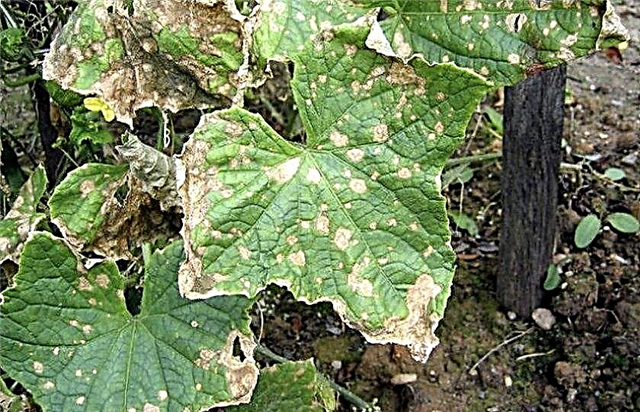
- Bacteriosis - fungal infection, which manifests itself in the form of spots on the leaves. Temperature differences during the rainy season contribute to the disease. Sick cucumbers are destroyed, and the rest are sprayed with a 0.2% solution of Fitoflavin-300.

- Cladosporiosis or olive spotting affects fruits and leaves. They are discolored and stained with earthy color. It is recommended to spray the plants with a 1% solution of Bordeaux fluid, twice, with an interval of 2 weeks.

- Root rot affects plants if the soil is excessively moist. To prevent the problem, control the temperature of the water and the frequency of watering. Destroy diseased plants.

- Mosaic leaves wrinkled, cucumbers covered with bleached spots. This is a viral disease that is carried by aphids and other pests. Therefore, the fight against it begins with the destruction of harmful insects.

- Powdery mildew striking cucumbers in the rainy season. It appears as a silver coating on the leaves. They treat plants by spraying with Topaz and Karotan preparations.

- Fusarium wilt - These are drooping tops of leaves. At night, the leaves come to life, but subsequently fade anyway. Use spraying with Privikura.

The main pests of cucumbers are aphids and other sucking insects. Detection of pests is complicated by the fact that they live on the underside of the leaves and are not particularly active during the day. But you can notice the deformation of the leaves and other damage. In this case, crops are treated with insecticides.
The main pests:
- Gourd aphids - the main pest. It is dangerous not only because it violates the integrity of the leaves, but also because it is a carrier of viruses. The sticky coating that it leaves on the leaves becomes a breeding ground for the propagation of fungal spores. Destroy aphids by spraying cucumbers with a solution of insecticidal soap. You can also process crops with Fitoferm or Iskra.
- Spider mite - a microscopic insect that feeds on juice. You can notice its activity by damage to the sheet plate and cobwebs. To combat it, use acaricides.
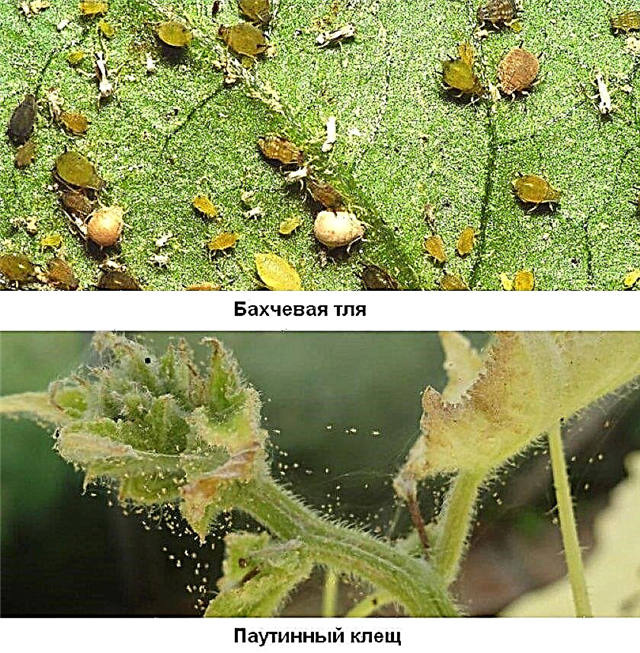
Harvesting and storage
Harvesting begins 40 days after emergence. Tentatively, this is the month of June or July. For transportation, cut the cucumbers, leaving a small tail (1-2 cm). For yourself or for harvesting for the winter, it is advisable to collect cucumbers daily. This stimulates further fruiting.
A quality fetus must not be deformed or damaged. All greenbacks will be approximately the same size, with a pronounced cucumber flavor. They can be stored in the refrigerator in a plastic film for up to 10-15 days. But longer fresh cucumbers are not stored.
It is not difficult to grow a large crop of vegetables beloved by all, the main thing is to observe simple and clear requirements for caring for plants. Apply the recommendations mentioned in the article in practice, and the plants will surely please you with a good harvest.









